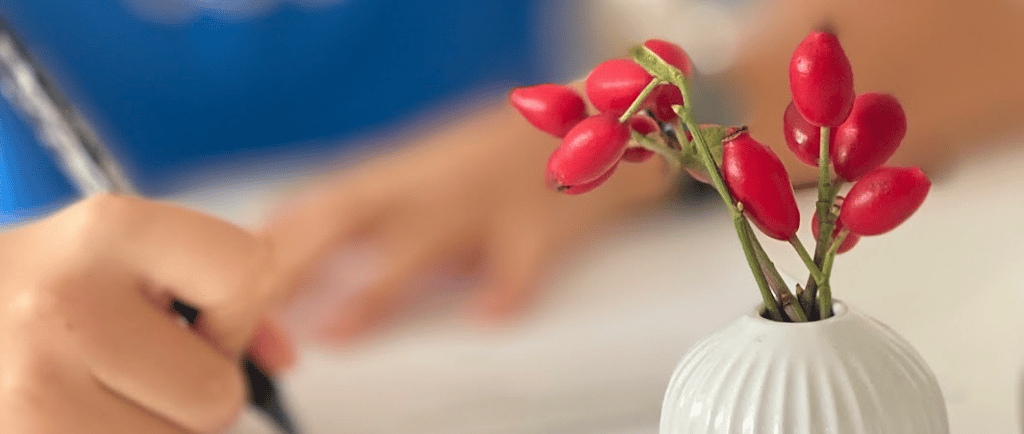The Power of I-Narrative Stories in Elementary Classroom 🌿
By giving a voice to nature—like Rose Hip, a small but mighty fruit—children can understand the vital roles that plants and animals play in our environment and throughout history. 🌱📖
THEORY
10/6/20243 min read


Montessori emphasizes the power of language as a tool for connecting children to humanity, the natural world, and their place in history. Here are 5 key principles that guide how I-narrative stories should be crafted, particularly for 6-12 year old children. 🌍✨
Montessori Principles to Follow When Crafting
I-Narrative Stories
1. Tap into Human Needs and Tendencies:
You can start by linking the Rose Hip to a human need, such as nourishment, protection, or survival. This reflects Montessori’s emphasis on human tendencies and how objects in the environment serve these needs. 🌿
For example: "While the rose is admired for its beauty and fragrance, my journey is just beginning. Hidden within me is the power to nourish and heal, a gift I offer to both nature and humans."
2. The Role of Stories:
Storytelling is one of the oldest forms of cultural transmission from one generation to the next. I-narrative stories, where an object, plant, animal, or concept tells its own story from the first-person perspective, create a personal connection between the child and the subject. The child becomes more emotionally invested in the story, making the learning experience more meaningful. 📖💡
They also provide open-ended curiosity, leading children to explore not only what happens in the story but also to seek answers to their own questions about the natural world.
3. Personification and Imagination:
Give the Rose Hip a voice, allowing it to tell its own story in the first person. This engages the child's imagination and makes the plant’s biological role more relatable. 🌱✨
Example: "I am not just a fruit; I am a carrier of seeds, waiting to spread life and help the rose bush continue to grow."
4. Historical and Cultural Connections:
The story highlights how rose hips have been used throughout history, particularly in times of scarcity. This helps children understand the cultural and historical significance of this small but mighty fruit. 🍂
Example: "In times of war and hardship, when fresh fruits were hard to find, humans turned to me, knowing that I held the nutrients they needed. I became a symbol of resilience, quietly supporting life when the world around was difficult."
5. Encourage Curiosity and Exploration with Questions:
Use the I-narrative to inspire further exploration. Ask open-ended questions to hint at other areas for children to explore at the end of the story. 🌿❓
Example: "Have you ever wondered how I became so full of nutrients? Which animals choose to eat me, and how do they help new rose bushes grow?"
I, the Rose Hip: A Journey of Healing and Nourishment 🌹🍃
I am Rose Hip, a small but vital part of the beautiful rose plant. My story begins when the delicate petals of the rose fall away, leaving me behind to fulfill a different purpose. While the rose is admired for its beauty and fragrance, my journey is just beginning. Hidden within me is the power to nourish and heal, a gift I offer to both nature and humans. 🌸💪
As I grow, I ripen slowly, turning from green to a vibrant red or orange. I am not just a fruit; I am a carrier of seeds, waiting to spread life and help the rose bush continue to grow. The creatures of the earth, like birds and small animals, are the first to find me. They nibble at my skin, helping to spread the seeds inside me far and wide, ensuring that the rose will bloom again. 🐦🍃
Long before humans knew the power of modern medicine, they discovered my hidden strength. They found that I was filled with nutrients, especially Vitamin C, which helped keep them healthy during the long, cold winters. For centuries, they gathered me, boiling me into tea, making me into jams, or drying me for later use. In times of illness, I became a remedy—a small but mighty force that helped them stay strong and nourished. 🍵🌿
I am not just a part of the natural world; I am also a part of human history. In times of war and hardship, when fresh fruits were hard to find, humans turned to me, knowing that I held the nutrients they needed. I became a symbol of resilience, quietly supporting life when the world around was difficult. 💪🍂
And so, have you ever wondered how I became so full of nutrients? Which animals choose to eat me, and how do they help new rose bushes grow? The next time you see me growing on a wild rose bush, remember that I carry within me the history of survival and the promise of new life. 🌹💫
With Montessori Joy,
Vanina

